What is up, dear hivians beer lovers! I hope everyone is doing well.
It's been a while again since my last post here in this community. Well, this time I'm going to continue talking about the trip I took in the beginning of the year to the Northeastern region of Brazil, but in a beer version – you can check the post of the first part of the trip here. As I mentioned in the post above, I traveled to "Natal", the capital city of the extreme northeastern state called "Rio Grande do Norte". So, as I arrived late there on that day, I just managed to go out and have a beer at a bar near the shore of the famous beach called "Praia de Ponta Negra" (Black Tip Beach).
¿Qué tal, queridos hivians amantes de cerveza? Espero que todos estén bien.
Ha pasado un tiempo
de nuevodesde mi último post aquí en esta comunidad. Bueno, esta vez voy a seguir hablando sobre el viaje que hice a principios de año a la región Noreste de Brasil, pero en una versión cervecera – puedes ver el post de la primera parte del viaje aquí. Como mencioné en el post anterior, yo viajé a "Natal", la capital del estado del extremo noreste llamado "Rio Grande do Norte". Así que, como ese día llegué tarde allá, solo conseguí salir a tomar una cerveza en un bar cercano a la orilla de la famosa playa llamada "Praia de Ponta Negra" (Playa de Punta Negra).
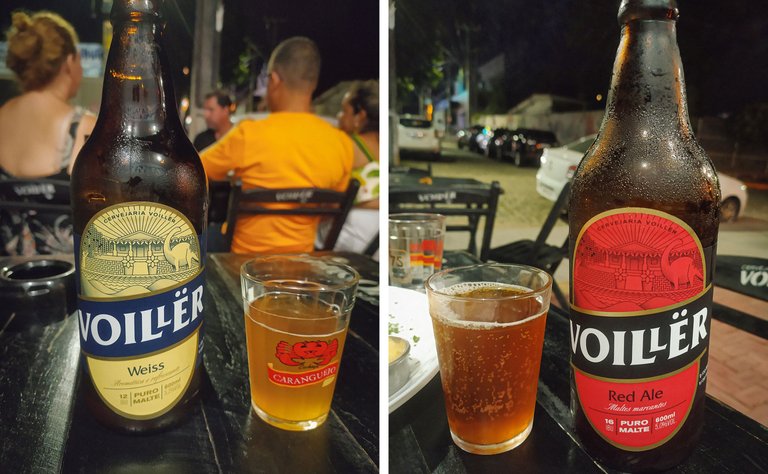
The funny fact is that, among the options, I ended up choosing a craft brewery from a neighbor state of Rio Grande do Norte, called "Paraíba". The brand is called "Voillër", is a microbrewery founded in 2018 in a small town of Paraíba's countryside called "Sousa".
So, among the options available, I decided to try two different types of beer – the Weiss and the Red Ale styles. Both came in bottles of 600 ml, I paid around $14 BRL for the Weiss type and something around $12 BRL for the Red Ale one (approximately $2.95 and $2.53 USD, respectively).
Lo curioso es que, entre las opciones, acabé eligiendo una cervecería artesanal de un estado vecino de Rio Grande do Norte, llamado "Paraíba". La marca se llama "Voillër", es una microcervecería fundada en 2018 en una pequeña ciudad del interior de Paraíba llamada "Sousa".
Así que, entre las opciones disponibles, decidí probar dos tipos diferentes de cerveza – los estilos Weiss y Red Ale. Ambas vinieron en botellas de 600 ml, pagué unos $14 BRL por la de tipo Weiss y algo así como $12 BRL por la Red Ale (aproximadamente $2.95 y 2.53 USD, respectivamente).
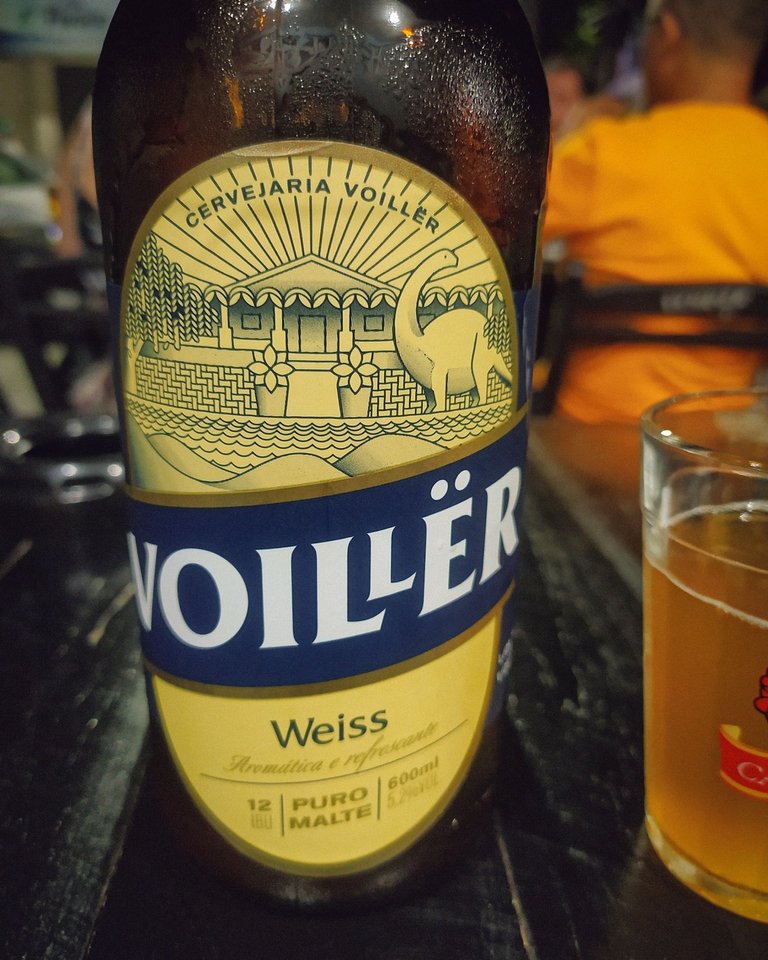
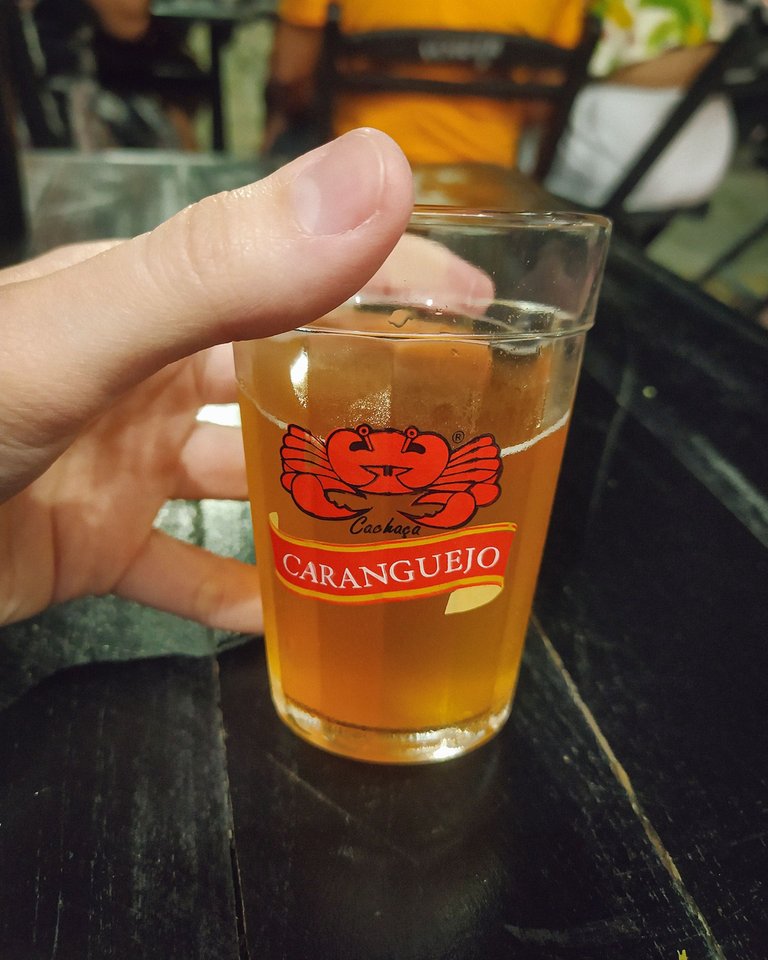
The Weiss style was the first one I tried, after ordering a serving of cheese fries, heh. Well, it has 5.2% ABV and 12 IBU, it displayed a hazy pale golden color when poured into the glass – by the way, the only glass available in the bar was the classic one above, which is called here "American glass", but it has nothing to do with the States since it's 100% Brazilian origin – and outside Brazil, it's called "Brazilian beer glass", haha. So, since it wasn't the right glass to drink a weiss beer due to its height, I believe the foam ended up being retained too much – it just showed up a thin foam which disappeared quickly – and, therefore, it didn't provide much aroma, just some weak hints of fruits and yeast.
In the mouth, well, it was disappointing – so much so that I ordered just one – because it was so watery for the style. I could feel a weak banana taste together with a weaker spicy aftertaste, like cinnamon. It's medium to light-bodied and its yeast taste didn't persist for too long. For a wheat made beer I expected to be a lot more rich and full-bodied.
La del estilo Weiss fue la primera que probé, después de pedir una porción de papas fritas con queso, jej. Bueno, tiene 5,2% ABV y 12 IBU, se mostró un color dorado pálido nebuloso cuando se vierte en el vaso – a propósito, el único vaso disponible en el bar era el clásico de arriba, que se llama aquí "vaso americano", pero no tiene nada que ver con los Estados Unidos ya que es 100% de origen brasileño – y fuera de Brasil, se llama "vaso de cerveza brasileña", jaja. Entonces, como no era el vaso adecuado para beber una cerveza weiss debido a su altura, creo que la espuma acabó reteniéndose demasiado – sólo apareció una espuma fina que desapareció rápidamente – y, por lo tanto, no proporcionó mucho aroma, sólo algunos toques débiles de frutas y levadura.
En la boca, bueno, fue decepcionante – tanto que pedí sólo una – porque estaba muy aguada para el estilo. Podía sentir un débil sabor a plátano junto con un retrogusto picante aún más débil, como canela. Es de cuerpo medio a ligero y su sabor a levadura no persistió demasiado tiempo. Para ser una cerveza de trigo esperaba que fuera mucho más rica y con más cuerpo.
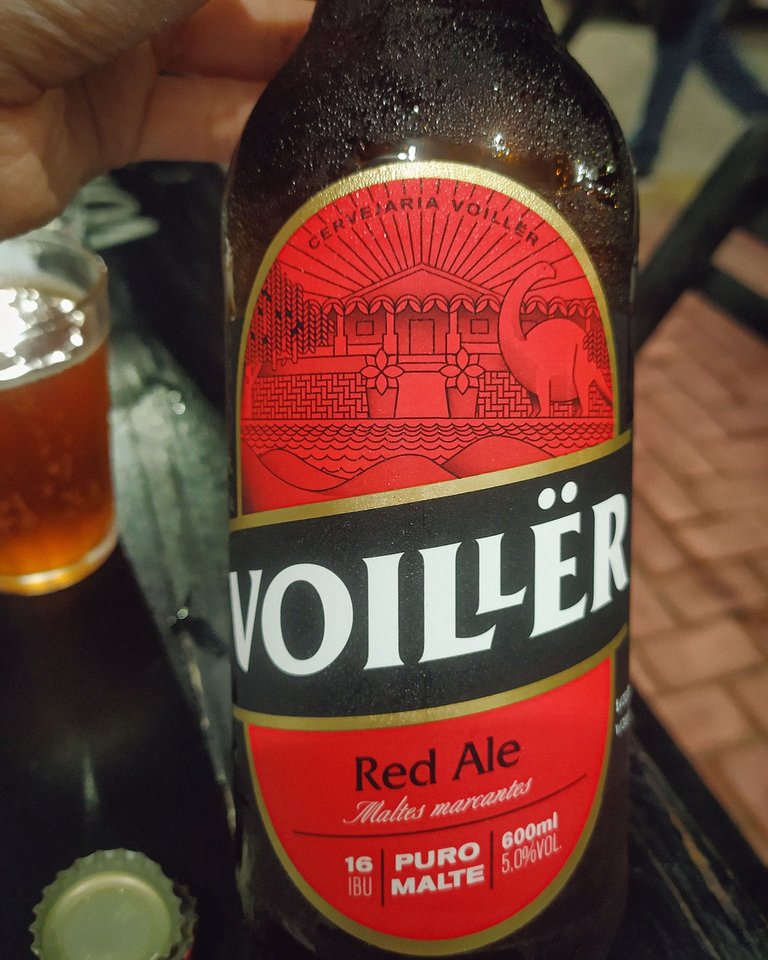
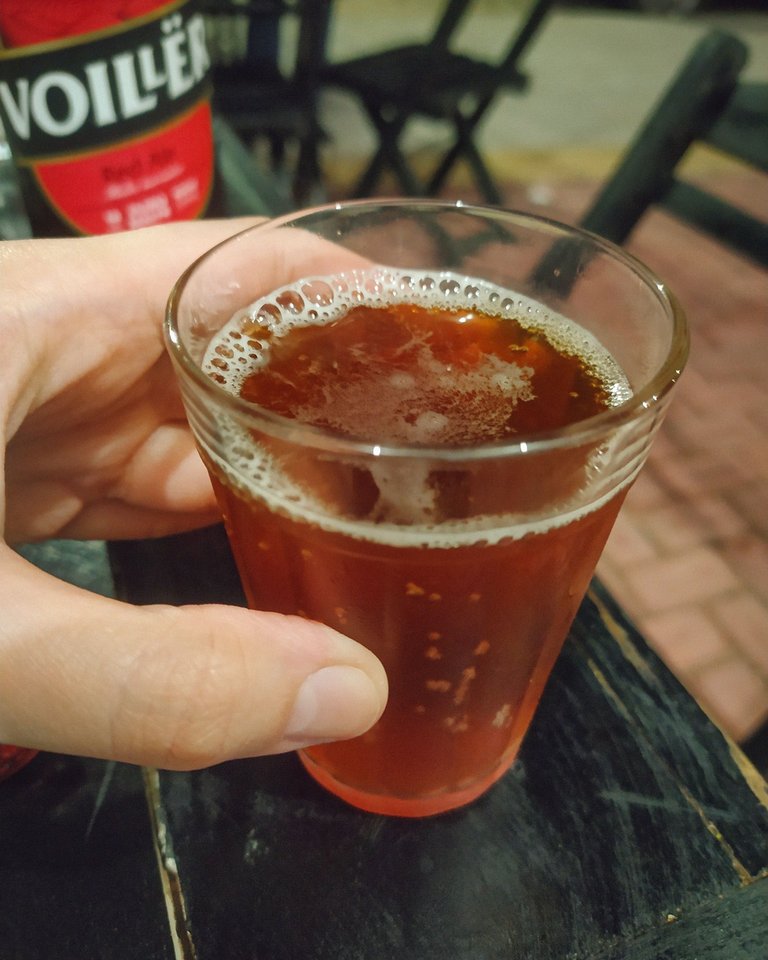
After eating the cheese fries, I bought the Red Ale then. It's slightly less alcoholic but a bit more bitter – it has 5.0% ABV and 16 IBU. In the glass, it exhibited a beautiful reddish amber color, with lots of bubbles, and had the same amount of foam as the former, with also low persistence – I believe the glass also influenced on the carbonation here. I remember that on the back of the bottle it was saying that this style uses 4 types of American hops and 4 types of malt, however, the scent that stood out the most was from the roasted malts – but it also had a background herbal hint. In the mouth, the roasted taste was more outstanding, reminiscent of caramel, with very subtle herbal and earthy hints. The hops and malts there were very well balanced. It's medium bodied, its finish is somewhat dry and the sweetness from the caramel hints went away in the aftertaste.
Después de comerme las papas fritas con queso, me compré, pues, la Red Ale. Es ligeramente menos alcohólica pero un poco más amarga – tiene 5.0% ABV y 16 IBU. En el vaso, exhibió un hermoso color ámbar rojizo, con muchas burbujas, y tenía la misma cantidad de espuma que la anterior, con también poca persistencia – creo que el vaso también influyó en la carbonatación aquí. Recuerdo que atrás de la botella decía que este estilo utiliza 4 tipos de lúpulos americanos y 4 tipos de malta, sin embargo, el aroma que más destacó fue el de las maltas tostadas – pero también tenía un toque herbáceo de fondo. En boca destacó más el sabor tostado, que recordaba al caramelo, con toques herbáceos y terrosos muy sutiles. El lúpulo y la malta estaban muy bien equilibrados. Es de cuerpo medio, su final es un poco seco y el dulzor de los toques de caramelo desapareció en el retrogusto.
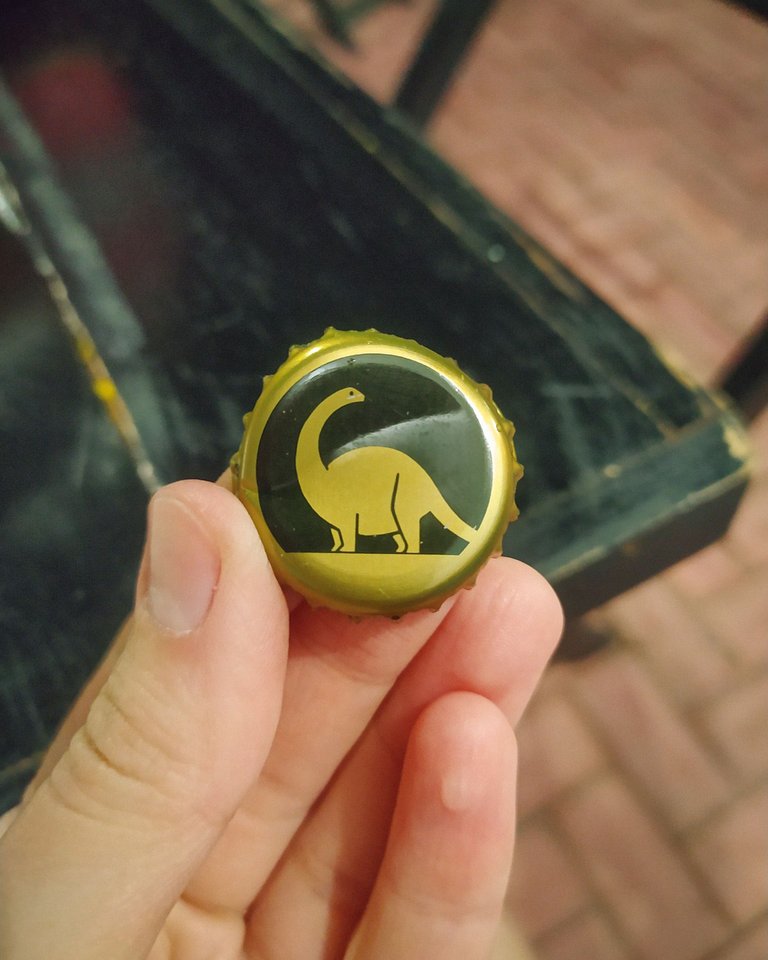
In general, these two types from Voillër lacked personality in my opinion, but it was a good choice to start the trip through Northeastern region. I wish I could try the IPA style when I come back, by the way.
Have you ever tried any beer from Voillër? Let me know in the comments!
Thank you for reading, see you next time! 🍺😊✌️